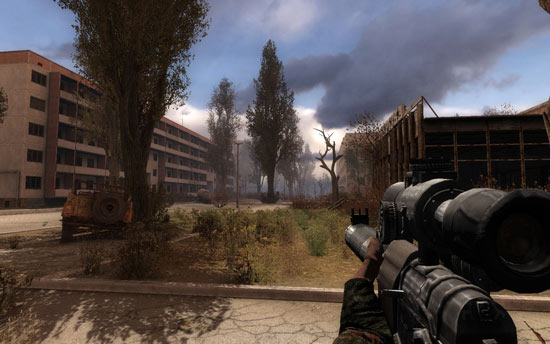Gigabyte GA-890GPA-UD3H Motherboard Review – AMD 890GX
S.T.A.L.K.E.R.: Call of Pripyat

The events of S.T.A.L.K.E.R.: Call of Pripyat unfold shortly after
the end of S.T.A.L.K.E.R.: Shadow of Chernobyl following the ending in
which Strelok destroys the C-Consciousness. Having discovered the open
path to the Zone’s center, the government decides to stage a large-scale
operation to take control of the Chernobyl nuclear plant.
S.T.A.L.K.E.R.: Call of Pripyat utilizes the XRAY 1.6 Engine,
allowing advanced modern graphical features through the use of DirectX
11 to be fully integrated; one outstanding feature being the inclusion
of real-time GPU tessellation. Regions and maps feature photo realistic
scenes of the region it is made to represent. There is also extensive support for older versions of DirectX, meaning that Call of Pripyat is
also compatible with older DirectX 8, 9, 10 and 10.1 graphics cards.

The game S.T.A.L.K.E.R.: CoP has no internal benchmarking tools built
into the game engine, but they do have a standalone benchmark available
that we used for our testing purposes. The screen capture above shows
the main window of the benchmark with our settings. Notice we are
running Enhanced Full Dynamic Lighting “DX10” as our renderer.


Comments are closed.